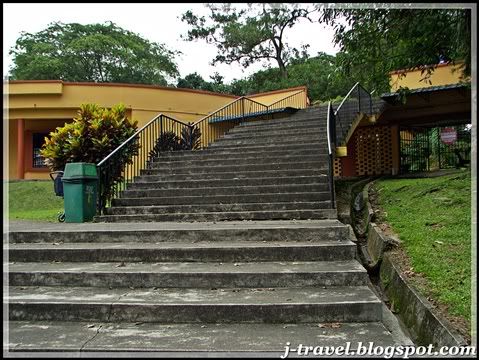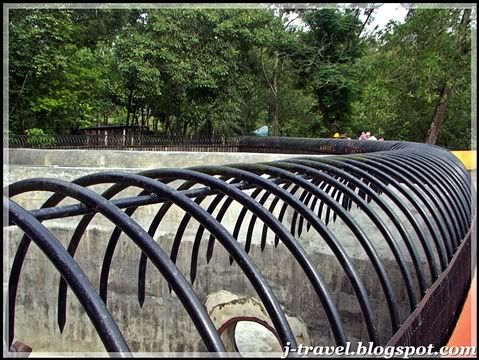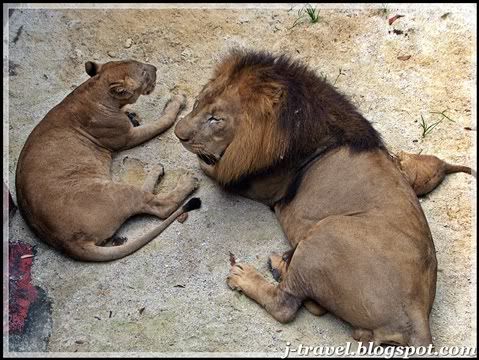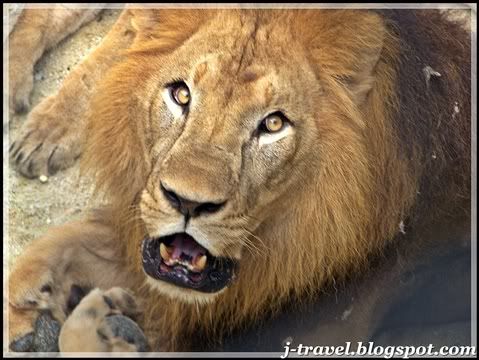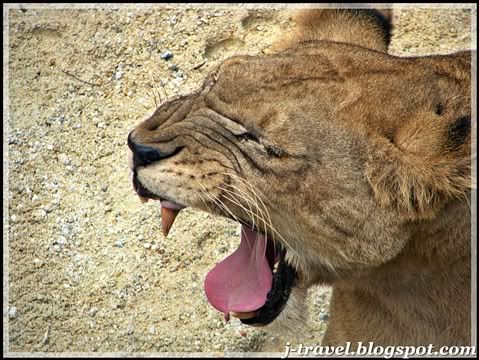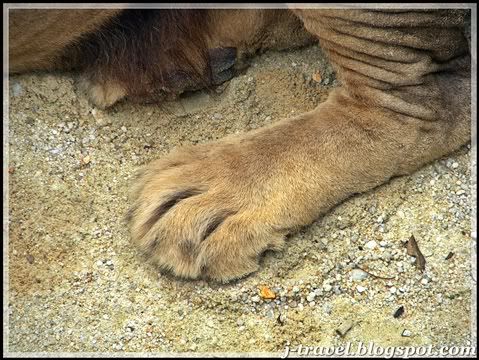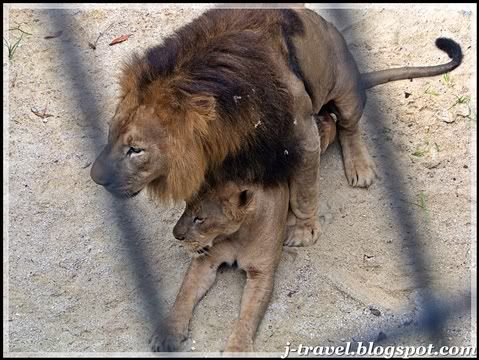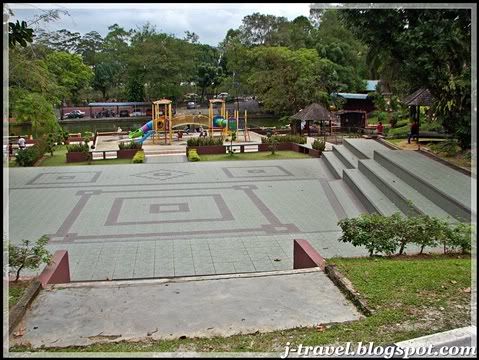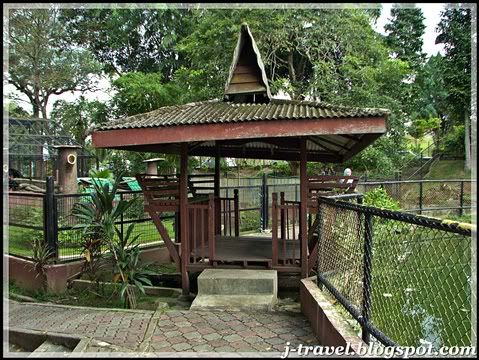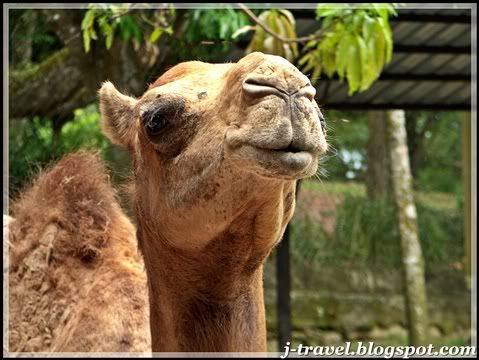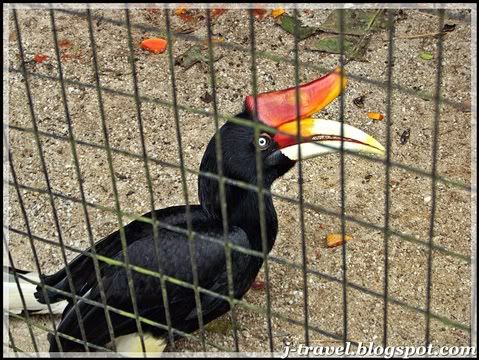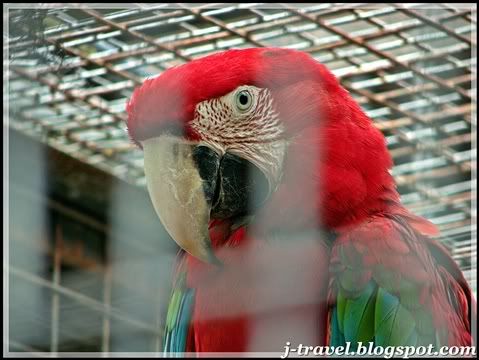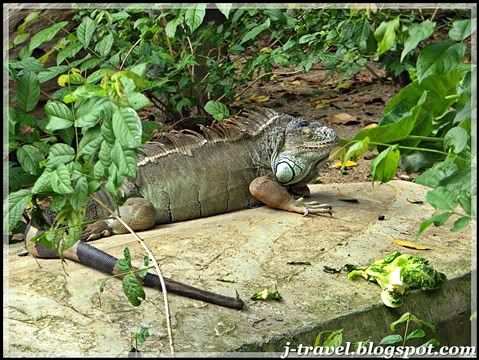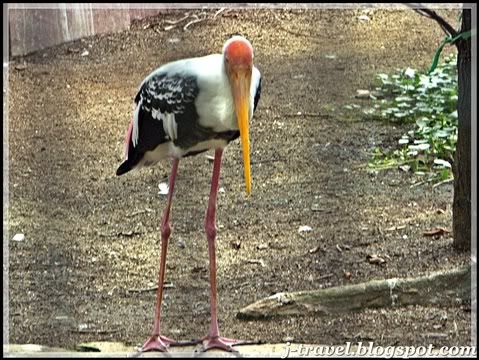Travel Tour to Australia
Tourism culture and History tour
Australia overview

Many harbor a very particular image of Australia as the Sydney Opera House or Ayers Rock, despite these famous icons render honor to the low abundance of natural treasures of the country and its cultural diversity and its immensity. Australia offers all kinds of experiences, from the extraordinary desert area and the spectacle of the Great Barrier Reef to the cosmopolitan character of Sydney and its vast beaches, considered the best in the world. Australia is a huge country, so that those who harbor the idea of going to the opera in Sydney one night and visit Crocodile Dundee the next day had better review their knowledge of geography. Its extension, adjacent to the friction between the ancient land steeped in Aboriginal tradition and Western culture subsequently adopted, gives Australia much of its character
When to go to Australia
Any time is suitable to visit Australia. Summer (December to February) is extremely hot everywhere, except Tasmania. During these months, the southern states are transformed into beach destinations. Farther north, they live a really wet season when the sea is full of jellyfish. At this time the top is a green sublime, and receives few tourists.
June-August, things have cooled toward the South and have been very dry north. It is a perfect time to visit Queensland or the field. For those who prefer to ski, it's time to go to the stations of Victoria and New South Wales. The best seasons are spring and summer because the climate is softened in the spring, you can enjoy the wildflowers in the countryside, while autumn is particularly beautiful in Canberra and the Australian Alps. It is better not to travel to Australia at Easter, to avoid chaos on the roads caused by the holidays
Australia festival and holidays
Christmas is part of the long summer school holidays, so in December and January is Australia half holiday. At this time, almost no accommodations are available. Among national holidays include the Australia Day (January 26), evoking the arrival of the first fleet, and Anzac Day (April 25), which commemorates the attack by military forces in Australia and New Zealand Gallipoli in 1915.
The great Sydney Festival, which takes place mainly in January, hosting a series of outdoor concerts, street theater and fireworks. The Adelaide Arts Festival takes place in early March in even-numbered years. In the odd, Womadelaide, the Adelaide  festival (which celebrates outdoors) for music and dances of the world, takes place in February. Held at the Melbourne Comedy Festival (festival of humor) in February, the Writer's Festival (the largest festival of writers from the world) in September and the fabulous Melbourne International Festival in October. A couple of festivals are art and Aboriginal culture: the Stomper Ground Festival, being held in Broome in October and the Barunga Wugularr Sports & Cultural Festival, which takes place in June near Katherine.
festival (which celebrates outdoors) for music and dances of the world, takes place in February. Held at the Melbourne Comedy Festival (festival of humor) in February, the Writer's Festival (the largest festival of writers from the world) in September and the fabulous Melbourne International Festival in October. A couple of festivals are art and Aboriginal culture: the Stomper Ground Festival, being held in Broome in October and the Barunga Wugularr Sports & Cultural Festival, which takes place in June near Katherine.
As for sports, takes place in August in Darwin's Beer Can Regatta, a race in boats built with cans of beer in Alice Springs, the Henley-on-Todd is a race boat that is' run 'in the dry bed of a river. Other career highlights include the Sydney to Hobart Sailing (on December 26), Open Australia (Melbourne in January), the Grand Prix of Australia (Melbourne in March), Australian Rules Football (in the field of March to September) and the Melbourne Cup horse race, the first Tuesday of November.
In February or March we celebrate the festival multitudinous and extravagant Gay & Lesbian Mardi Gras and Melbourne, also emphasized the gay Midsummer Festival, which takes place in January or February
Australia attraction
Sydney
The first city in Australia is its oldest settlement, the center of economic power and the nation's capital in everything but name. Built on the banks of the mighty Port  Jackson and is now a vital city, egocentric, full of casual urbanity and a slavishly obsessed with all manner of fashions. The magnificent Olympic Games in Sydney in 2000 have increased the fame of the city as a civilized city, hospitable and entertaining.
Jackson and is now a vital city, egocentric, full of casual urbanity and a slavishly obsessed with all manner of fashions. The magnificent Olympic Games in Sydney in 2000 have increased the fame of the city as a civilized city, hospitable and entertaining.
To prove that he has visited Australia, there is nothing better than a drawn picture of the Sydney Opera House, Sydney Harbor Bridge in the background.
Melbourne
Australia's second city is a contradictory place, full of hidden charms, a residential community near the  Bay of troubled Yarra River, a city cosmopolitan, educated, conservative lover of football and ... A paradise for art. It is full of shops, restaurants, nightlife and sporting activities. Many people think living in Melbourne, one of the most active in the world.
Bay of troubled Yarra River, a city cosmopolitan, educated, conservative lover of football and ... A paradise for art. It is full of shops, restaurants, nightlife and sporting activities. Many people think living in Melbourne, one of the most active in the world.
From Melbourne it is worth leaving on a trip to Phillip Island with its penguins, the pristine Wilsons Promontory and the Great Ocean Road, a route that runs along the southwest coast of Victoria.
Great Barrier Reef
One of the greatest assets of Australia is the reef that runs the coast of Queensland, as an estimate of the natural wonders of the planet, is the largest barrier reef and the largest structure made by living organisms on Earth. In the north, the reef, located just 50 km from the coast, runs on an almost continuous in the South, rather individual reefs can be seen in some places more than 300 km from the coast. Hundreds of islands dot the reef area, and about twenty have tourist facilities, while in many others it is possible to camp.
as an estimate of the natural wonders of the planet, is the largest barrier reef and the largest structure made by living organisms on Earth. In the north, the reef, located just 50 km from the coast, runs on an almost continuous in the South, rather individual reefs can be seen in some places more than 300 km from the coast. Hundreds of islands dot the reef area, and about twenty have tourist facilities, while in many others it is possible to camp.
Cairns
Cairns is the tourist capital of the north end and one of the most popular destinations  for travelers. Until recently, it was just a tropical backwater lethargic, much of its charm and languor disappeared with the explosive growth of tourist infrastructure, but it is an ideal base for exploring the wealth of Queensland. From Cairns it is feasible to organize excursions to the Great Barrier Reef, Green Island, Fitzroy Island, the Atherton Plateau, the market of Kuranda, the 50 km strip of beach that stretches north to Port Douglas, and the jungle and the coastal landscape of Cape Tribulation and the Daintree River.
for travelers. Until recently, it was just a tropical backwater lethargic, much of its charm and languor disappeared with the explosive growth of tourist infrastructure, but it is an ideal base for exploring the wealth of Queensland. From Cairns it is feasible to organize excursions to the Great Barrier Reef, Green Island, Fitzroy Island, the Atherton Plateau, the market of Kuranda, the 50 km strip of beach that stretches north to Port Douglas, and the jungle and the coastal landscape of Cape Tribulation and the Daintree River.
Darwin
The capital of Northern Australia is closer to Jakarta than Sydney and Melbourne to Singapore, so it is not strange to remember that most of Asia to the rest of Australia. Such proximity to the northern neighbors is reflected in the tranquil atmosphere, the tropical cosmopolitan city.
Uluru (Ayers Rock)
Uluru is an enclave of great cultural significance to the Anangu Aboriginals and the best-known symbol of the Australian landscape. The pilgrimage to Uluru and the  ascent to the summit of infarction became a ritual Australian Aboriginal owners but always preferred that visitors climbed the rocks, and now many respected their wishes. The gigantic rock 3.6 km in length rises to 348 m from the surrounding bush, absolutely flat, situated in the middle of the field, especially impressive at dawn and at dusk, when the rock changes from red hues. Some tours around the base of the rock gives several caves, sacred sites and Aboriginal rock paintings. At the nearby Kata Tjuta (the Olgas), 32km west of Uluru, there are other monoliths of comparable beauty, and Mt Olga is actually much higher than Uluru. The Valley of the Winds is a 6 km circuit highly recommended.
ascent to the summit of infarction became a ritual Australian Aboriginal owners but always preferred that visitors climbed the rocks, and now many respected their wishes. The gigantic rock 3.6 km in length rises to 348 m from the surrounding bush, absolutely flat, situated in the middle of the field, especially impressive at dawn and at dusk, when the rock changes from red hues. Some tours around the base of the rock gives several caves, sacred sites and Aboriginal rock paintings. At the nearby Kata Tjuta (the Olgas), 32km west of Uluru, there are other monoliths of comparable beauty, and Mt Olga is actually much higher than Uluru. The Valley of the Winds is a 6 km circuit highly recommended.
Brisbane
Brisbane is the third largest metropolis in Australia and the capital of Queensland. Regarded by Australians as a city neglected zafado has this bad reputation and has become a thriving center to accommodate a range of major international events in the eighties, including the Commonwealth Games and Expo 1982 Universal 1988. Brisbane has been awarded the role of cosmopolitan and lively city, with interesting neighborhoods, a street of cafes, a great riverside park, a full cultural calendar and a vibrant nightlife.
Regarded by Australians as a city neglected zafado has this bad reputation and has become a thriving center to accommodate a range of major international events in the eighties, including the Commonwealth Games and Expo 1982 Universal 1988. Brisbane has been awarded the role of cosmopolitan and lively city, with interesting neighborhoods, a street of cafes, a great riverside park, a full cultural calendar and a vibrant nightlife.
Perth 
Perth, the Western capital, is vibrant and modern, located between the Swan and Canning rivers, with Cerulean the Indian Ocean to the west and the Darling Range to the east. His state is the sunniest of Australia, but the really striking is its isolation from the rest of the country, as Perth is closer to Singapore than Sydney.
Canberra
Canberra is a fascinating creation of the twentieth century that has struggled to  establish itself as the epicenter of history, pride and national identity of Australia. Canberra is proud to have long been a city of politicians and bureaucrats who live at the expense of the hard work of rural people. Today this has changed: the politicians go home on weekends and many bureaucrats have lost their jobs because of recent cuts in public services. Canberra has moved from a federation of city adult babies with all the problems and benefits involved.
establish itself as the epicenter of history, pride and national identity of Australia. Canberra is proud to have long been a city of politicians and bureaucrats who live at the expense of the hard work of rural people. Today this has changed: the politicians go home on weekends and many bureaucrats have lost their jobs because of recent cuts in public services. Canberra has moved from a federation of city adult babies with all the problems and benefits involved.
Adelaide
When the first settlers founded Adelaide, a city built with stones and solid looking  solemn, quiet and civilized as any other state capital of Australia. The firm goes beyond the architecture, since there was a time when that was considered the city of the blessed, or uncompromising Puritans, gaining fame for its disproportionate number of churches. Currently, pubs and nightclubs outnumber the churches. This town sits on an excellent site, with the center surrounded by green areas and the metropolitan area surrounded by the hills of the chain of Mount Lofty and the Gulf of St. Vincent.
solemn, quiet and civilized as any other state capital of Australia. The firm goes beyond the architecture, since there was a time when that was considered the city of the blessed, or uncompromising Puritans, gaining fame for its disproportionate number of churches. Currently, pubs and nightclubs outnumber the churches. This town sits on an excellent site, with the center surrounded by green areas and the metropolitan area surrounded by the hills of the chain of Mount Lofty and the Gulf of St. Vincent.
Hobart
South Hobart is the capital. The fact that it is small (129,000 inhabitants) is what gives it its particular charm. It is a coastal town with an active port and mountains which offer views of residential areas that are crowded slopes. Its beautiful Georgian buildings (stores up to the docks of the picturesque Port), relaxed atmosphere, its abundance of parks and their houses make Hobart one of the most attractive towns of Australia. Neighboring towns may consider that Hobart's interior is conservative and parochial, but it really has a thriving art scene and craft, coupled with a true historical sense, certainly, this is the place to stroll, eat and soak up the atmosphere.
it its particular charm. It is a coastal town with an active port and mountains which offer views of residential areas that are crowded slopes. Its beautiful Georgian buildings (stores up to the docks of the picturesque Port), relaxed atmosphere, its abundance of parks and their houses make Hobart one of the most attractive towns of Australia. Neighboring towns may consider that Hobart's interior is conservative and parochial, but it really has a thriving art scene and craft, coupled with a true historical sense, certainly, this is the place to stroll, eat and soak up the atmosphere.
Alice Springs
Alice Springs (20,000 inhabitants), built on the banks of the Todd River, usually dry, is a modern and pleasant city in the heart of Australia. May cause disappointment to those who wait on every corner saloons and genuine individuals of the desert, to explore the area but you can see the charm of this desert community. The city was founded as the scale of the telegraph line overland in 1870, but began its growth over the past 30 years. The road that runs south towards Adelaide, was not completely paved until 1987.
a modern and pleasant city in the heart of Australia. May cause disappointment to those who wait on every corner saloons and genuine individuals of the desert, to explore the area but you can see the charm of this desert community. The city was founded as the scale of the telegraph line overland in 1870, but began its growth over the past 30 years. The road that runs south towards Adelaide, was not completely paved until 1987.
Barossa Valley
The Barossa Valley is the wine-producing region known more for Australia. The slightly sloping valley of southern Australia, which was colonized by Germans in 1842 fleeing religious persecution in Prussia and Silesia, still reminiscent Germanic. This is an area that houses primarily cared about fifty wineries, most of whom would gladly accept the visit of tourists to sample and buy wine. To fully appreciate the scenery, it is advisable to leave the main road and diverted by a secondary crossing different peoples. The main town is Tanunda. Adelaide is just one hours drive to the Southwest. The worst time to walk around this area is between July and October, because during the winter months the vines are pruned. The best months are March to May, the season of harvest.
slightly sloping valley of southern Australia, which was colonized by Germans in 1842 fleeing religious persecution in Prussia and Silesia, still reminiscent Germanic. This is an area that houses primarily cared about fifty wineries, most of whom would gladly accept the visit of tourists to sample and buy wine. To fully appreciate the scenery, it is advisable to leave the main road and diverted by a secondary crossing different peoples. The main town is Tanunda. Adelaide is just one hours drive to the Southwest. The worst time to walk around this area is between July and October, because during the winter months the vines are pruned. The best months are March to May, the season of harvest.
There are other wine regions in the state, especially in the southeastern around Penola, Coonawarra and Padthaway, in the Clare Valley, north of Barossa and McLaren Vale around in the Fleurieu Peninsula.
Broome
The atmosphere of this cosmopolitan metropolis apart, its languid pace of old village collector of pearls and its relaxed tropical charm make magnet for travelers and an alternative to big cities and their lifestyle. Broome keeps Asian influences, in part  because of its history as a collector of pearls enclave and partly because Perth, the capital, is twice as distant Indonesia that. Cable Beach, near here, is one of the most famous beaches in Australia, to promote the tourism sector between the category, the city has escaped the Australian rude masses that flood most of the western towns. Broome points out the tiny district of Chinatown, the Sun Pictures Cinema, an outdoor cinema for 80 years, the Japanese cemetery and dinosaur footprints in Gantheaume Point. Broome also appealing to the observers of birds as the Broome Bird Observatory, located in Roebuck Bay, is one of the best way points of migrating waders in the Arctic. Bathers are advised that between November and March the waters are full of jellyfish.
because of its history as a collector of pearls enclave and partly because Perth, the capital, is twice as distant Indonesia that. Cable Beach, near here, is one of the most famous beaches in Australia, to promote the tourism sector between the category, the city has escaped the Australian rude masses that flood most of the western towns. Broome points out the tiny district of Chinatown, the Sun Pictures Cinema, an outdoor cinema for 80 years, the Japanese cemetery and dinosaur footprints in Gantheaume Point. Broome also appealing to the observers of birds as the Broome Bird Observatory, located in Roebuck Bay, is one of the best way points of migrating waders in the Arctic. Bathers are advised that between November and March the waters are full of jellyfish.
Flinders Range
Flinders mountain range rises from the north end of Spencer Gulf, east of South  Australia and extends northward along the 800 km and for many is the epitome of rural Australia, an excellent area for walkers, because of the colorful wildlife and the countryside. In the north the mountains are surrounded by salt or salt lakes. The defining feature of the range is the huge natural pond called Wilpena Pound, gorges flanked by 1,000 m. Alligator gorges are interesting, in the Mount Remarkable National Park, and the summit crowned Brachina porcelain known as Great Wall of China. The time advisable to approach this area in winter, though the mountains tend to be more green and flowery spring. Quorn and Hawker are two people who deserve to visit.
Australia and extends northward along the 800 km and for many is the epitome of rural Australia, an excellent area for walkers, because of the colorful wildlife and the countryside. In the north the mountains are surrounded by salt or salt lakes. The defining feature of the range is the huge natural pond called Wilpena Pound, gorges flanked by 1,000 m. Alligator gorges are interesting, in the Mount Remarkable National Park, and the summit crowned Brachina porcelain known as Great Wall of China. The time advisable to approach this area in winter, though the mountains tend to be more green and flowery spring. Quorn and Hawker are two people who deserve to visit.
Freycinet Peninsula
On the east coast of Tasmania, the mainland is part of Freycinet National Park, is  known for its beaches and caves, unusual plants and wildlife. Encourages all hikers. A representative is the road trip back to Wineglass Bay. The park contains a number of places for camping and lodging, but is famous for its drinking water shortage, so it is advisable to stock up in the nearby town of Coles Bay.
known for its beaches and caves, unusual plants and wildlife. Encourages all hikers. A representative is the road trip back to Wineglass Bay. The park contains a number of places for camping and lodging, but is famous for its drinking water shortage, so it is advisable to stock up in the nearby town of Coles Bay.
Great Ocean Road
This route by the south-west coast of Victoria is very spectacular winds through steep cliffs, windswept beaches and towering cliffs, through a lush forest and enormous eucalyptus. The most captivating is the Port Campbell National Park, where there is a curious collection of sculptures in limestone, including the Twelve Apostles, London Bridge and Loch Ard Gorge. Another focus of interest lies in the mountain forests Otways, between Lorne and Apollo Bay. The coastal towns are indispensable Lorne resort and the historic Port Fairy, west of Warrnambool. The road officially starts at Torquay and ends at Warrnambool, but continues along the coast to Portland.
cliffs, windswept beaches and towering cliffs, through a lush forest and enormous eucalyptus. The most captivating is the Port Campbell National Park, where there is a curious collection of sculptures in limestone, including the Twelve Apostles, London Bridge and Loch Ard Gorge. Another focus of interest lies in the mountain forests Otways, between Lorne and Apollo Bay. The coastal towns are indispensable Lorne resort and the historic Port Fairy, west of Warrnambool. The road officially starts at Torquay and ends at Warrnambool, but continues along the coast to Portland.
Kakadu National Park
Kakadu National Park is one of the natural wonders of Australia.  Covers a range of magnificent scenery, is home to a diverse fauna and contains some of the best examples of Aboriginal rock art. The park, a World Heritage Site for its cultural and natural significance, has an area of over 200 km from north to south and 100 km from east to west and is a 153 km road from Darwin in the Northern Territory. A strip of the park is Aboriginal land, and there are three conflicting lease contracts for uranium mines operating in the East.
Covers a range of magnificent scenery, is home to a diverse fauna and contains some of the best examples of Aboriginal rock art. The park, a World Heritage Site for its cultural and natural significance, has an area of over 200 km from north to south and 100 km from east to west and is a 153 km road from Darwin in the Northern Territory. A strip of the park is Aboriginal land, and there are three conflicting lease contracts for uranium mines operating in the East.
Kimberley
The rugged Kimberley in the far north of Western Australia, is one of the last frontier, remote and little explored, with major rivers and beautiful landscapes, the quintessentially Australian landscape: red earth, rocks, rubber trees and blue skies.  The fauna includes freshwater crocodiles, giant kangaroos and the rare Black-footed uallabí. Among its attractions include the throats of the Fitzroy River, the Wolfe Creek meteorite crater, the Gibb River Road and National Park Bungle Bunge. Halls Creek is the largest metropolis of Kimberley. Derby, 220 km, at the mouth of the Fitzroy River, is a good base for excursions in the practice area. The best time to visit is between April and September. Although the wet season (rainy season in the northern area) provides a carpet of storms and wild flowers. The rains make many channels impassable.
The fauna includes freshwater crocodiles, giant kangaroos and the rare Black-footed uallabí. Among its attractions include the throats of the Fitzroy River, the Wolfe Creek meteorite crater, the Gibb River Road and National Park Bungle Bunge. Halls Creek is the largest metropolis of Kimberley. Derby, 220 km, at the mouth of the Fitzroy River, is a good base for excursions in the practice area. The best time to visit is between April and September. Although the wet season (rainy season in the northern area) provides a carpet of storms and wild flowers. The rains make many channels impassable.
Snow Mountains
Located on the southwestern extremity of New South Wales, the snow-capped mountains are the highest mountains of the great divide of Australia. Kosciusko National Park, the largest of New South Wales (6,900 km ²), stretching from the border with Victoria to the Federal Capital Territory, covering almost all these  mountains. Here are all ski resorts in the state, the most rugged mountain scenery, numerous caves, glacial lakes and forests. Despite its reputation as a place for winter sports, is also famous among hikers in summer, due to its high mountain wildflowers. Among the ski resorts, Thredbo contained, Perish Valley, Smiggins Hole and Mt Blue Cow. Mount Kosciusko, with 2228 m, is the highest peak. The principal city of the region is Jindabyne, situated on the edge of the park, beside a beautiful lake.
mountains. Here are all ski resorts in the state, the most rugged mountain scenery, numerous caves, glacial lakes and forests. Despite its reputation as a place for winter sports, is also famous among hikers in summer, due to its high mountain wildflowers. Among the ski resorts, Thredbo contained, Perish Valley, Smiggins Hole and Mt Blue Cow. Mount Kosciusko, with 2228 m, is the highest peak. The principal city of the region is Jindabyne, situated on the edge of the park, beside a beautiful lake.
Australia ACTIVITIES
With more than 7,500,000 km of sparsely populated territory, it is not surprising that Australia is a favorite place for lovers of adventure. It is possible to travel the country in a 4x4, on horseback or even riding a camel. They are also good for cycling on paths, although the center, very dry, is reserved for very experienced. Fantastic  routes for walkers in MacDonnell Ranges in the Northern Territory; Finders Ranges, in the south, in the Blue Mountains in New South Wales and the Snowy Mountains (on the border with Victoria), and wide and wild territory of Tasmania. The best place to ski and board show-practice are the Snowy Mountains, during the warmer months you can explore the excellent horse riding in the Snowy.
routes for walkers in MacDonnell Ranges in the Northern Territory; Finders Ranges, in the south, in the Blue Mountains in New South Wales and the Snowy Mountains (on the border with Victoria), and wide and wild territory of Tasmania. The best place to ski and board show-practice are the Snowy Mountains, during the warmer months you can explore the excellent horse riding in the Snowy.
In Australia there are numerous beaches for surfing, some of them in cities (Sydney and Perth), other coastal cities (Lorne in Victoria, Byron Bay in New South Wales and the Gold Coast, Queensland) and in other areas more isolated (southwestern South Australia and northwest Western Australia). Apart from diving mecca of the Great Barrier Reef in the Coral Sea, there are other places for sport in Kangaroo Island in South Australia (where there are several affordable prices) and at Esperance, Rottnest Island, and Carnarvon in Western Australia.
Whale watching is possible in many places, the most famous are Eden in New South Wales, Warrnambool in Victoria, Western Australia in Albano and Fraser Island in Queensland. You can go rafting and canyoning in the rough waters of the river Nybdodia in Coffs Harbor in New South Wales in the Murray near Khancoban, also in New South Wales in the Tully and North Johnstone rivers in Queensland between Cairns and Townsville, and in Tasmania.
Australia history
Aboriginal Australians have the largest continuous cultural history of the world: their seeds back to the last ice age. While many aspects of Australian prehistory are veiled in mystery, the theory that its first inhabitants crossed the sea from Indonesia about seventy thousand years ago is a significant acceptance. For the first visitors, called robustus austrolopithecus by archaeologists because of its powerful skeleton, twenty thousand years after they happened more stylized another race called the gracilis, the ancestors of Aboriginal Australians.
The Europeans made their entry into Australia during the sixteenth century, Portuguese sailors first arrived, followed by Dutch explorers and the enterprising English pirate William Dampier. Captain James Cook sailed along the coast east in 1770 and stopped at Botany Bay. After surrounding Cape York, claimed the continent on behalf of the British crown and named it New South Wales.
In 1779, Joseph Banks (a naturalist on Cook's trip) suggested that Britain could solve overcrowding problems in its prisons where the convicts transported to New South Wales. In 1787, he left the first fleet to Botany Bay under the command of Captain Arthur Philip, who became the first governor of the colony. The fleet comprised 11 ships, 750 convicts (men and women), four companies of sailors and provisions for two years. Philip arrived in Botany Bay on January 26 1788, but soon moved north to Sydney Cove, where land and water are best. For newcomers, New South Wales was a truly terrible and inhumane, and 16 years on the cologne hung the threat of hunger.
During the following decades, other free settlers were attracted by Australia, but what really changed the appearance of the colony was the discovery of gold in the 1850s. The influx of immigrants and some important findings re the economy and irrevocably changed the social structures of the colony. Aborigines were forcibly evicted from their lands as new settlers enabled land for agriculture or mining. The Industrial Revolution in England required plenty of time for raw materials and agricultural and mineral resources of Australia were able to meet demand.
Australia as a nation built on January 1, 1901, when he established the federation of independent colonies, but kept many of the legal and cultural ties with England. Australian troops fought alongside Britain during the War of the Boers and the two world wars. However, the role played by United States to protect Australia from Japanese invasion during World War I marked the beginning of a change of loyalties. Australia supported the United States during wars in Korea and Vietnam.
Immigration after World War II brought an influx of European immigrants, not just of Britain, who have since contributed greatly to the development of the country, turning its culture and broadening your horizons. In the 1980s, Australia accepted large numbers of Asian refugees, especially from Vietnam. From a socio-economic, Australia still tries to assume its position in Asia. Among the current issues, republicanism is the universal acceptance of the Aboriginal land rights law, enacted in 1993, and demand an official apology from the government for the injustice and theft suffered by generations of aborigines, many of whom still living in appalling conditions.
In the 1996 elections, Prime Minister Paul Keating was defeated by the conservative coalition led by John Winston Howard.
In the late 1990s, republicanism was the protagonist in the Australian political landscape, the idea of replacing the figure of the British monarchy by an Australian president as head of government was provided by a growing number of people, especially the most young population, which considered the constitutional links between Australia and United Kingdom of little significance and supported the declaration of Australia as a republic. Finally, the national referendum of 1999 gave victory to supporters of the monarchy and the continuation of Australia as a member of the Commonwealth.
In the 2001 election, John Winston Howard was re-elected prime minister.
Australia culture
Australia is a society of multiple cultures. Until WWII, Australians were mainly descendants of British and Irish. Then came huge contingent of immigrants from Greece, Italy, Yugoslavia, Lebanon and Turkey, to which must be added more recent flows of immigrants from Asia. There are about 230,000 Aborigines and Torres Strait Islanders. Many Australians speak Italian, Greek, Lebanese, Vietnamese or Turkish as their first language. Anglo Australians use a hodgepodge of slang words and abbreviations that indigenous becomes incomprehensible language.
Australia has an important artistic heritage and a fascinating panorama of contemporary art. The carvings and paintings made by Aboriginals in the rocks have an age of at least 30,000 years. European settlers began to develop their own forms of Australian art at the end of the nineteenth century. Various artists from the mid-twentieth century achieved world renown (Sydney Nolan, Arthur Boyd, Patrick White), his followers have emphasized in modern painting (Brett Whiteley, Fred Williams), literature (Peter Carey, Thomas Keneally), opera (Joan Sutherland) , films (Peter Weir, Bruce Beresford, George Miller, Gillian Armstrong), Comedy (Barry Humphries), dance (Graeme Murphy, Paul Mercurio), popular music (Nick Cave, INXS, AC / DC, Jet, Midnight Oil, Silverchair, Kylie Minogue) and actors (Nicole Kidman, Russell Crowe, Mel Gibson). Contemporary Aboriginal art has resurfaced throughout the last decade, its representatives have explored ways to preserve their traditional values and share them with the wider community.
The sport is the religion of Australia, world champion in cricket, the rugby league from rugby union, swimming and cycling. Other sports that are of great interest are basketball, sailing, soccer and Australian football or Aussie Rules, Australia characteristic of a sport similar to Gaelic football. The 2000 Olympic Games held in Sydney, were considered by the then president of the IOC, Juan Antonio Samaranch, the best to date.
Australia Map .

































